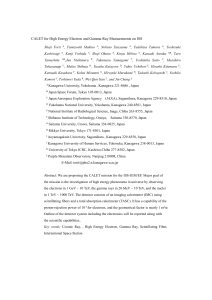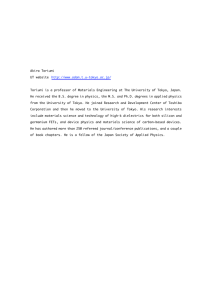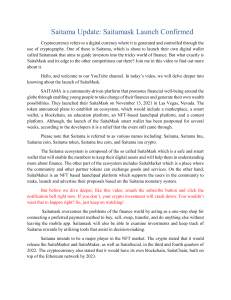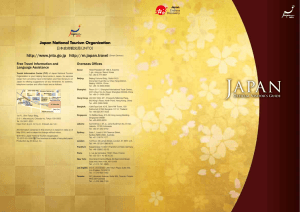Pertemuan ke 11 Daerah Kantou Matakuliah : N0572/Image of Japan
advertisement
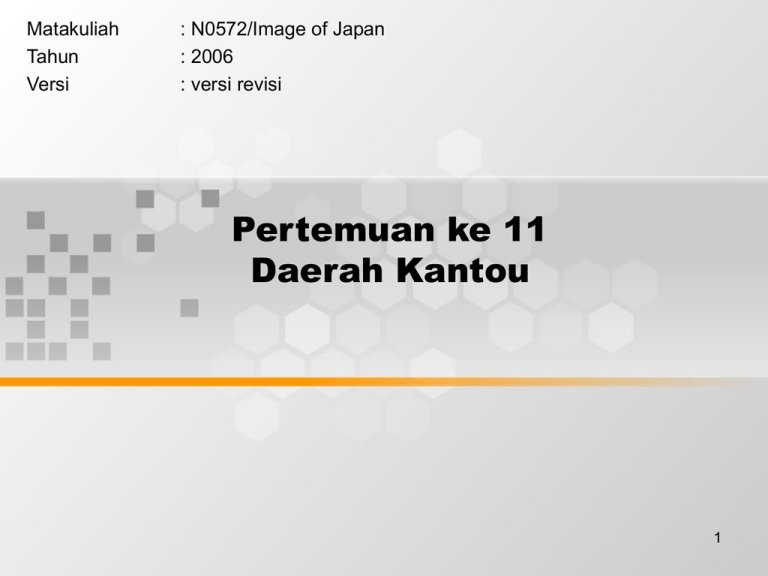
Matakuliah Tahun Versi : N0572/Image of Japan : 2006 : versi revisi Pertemuan ke 11 Daerah Kantou 1 Learning Outcomes Pada akhir pertemuan ini, diharapkan mahasiswa akan mampu : • Mendemonstrasikan melalui presentasi mengenai daerah geografis Kantou, Pref. Tochigi,Ibaragi, Gunma, Saitama, Chiba, Tokyo dan Kanagawa 2 Kantou 3 Kantou The Kantō region (Japanese: 関東地方, Kantōchihō) is a geographical area of Honshū, the largest island in Japan. The region encompasses seven prefectures aroundTokyo: Gunma, Tochigi, Ibaraki, Saitama, Tokyo, Chiba, and Kanagawa. Its boundaries are roughly the same as those of the Kantō plain. The plain itself, however, only makes up slightly more than 40 percent of the region. The plain itself, however, only makes up slightly more than 40 percent of the region. The rest consists of the hills and mountains that border it except on the seaward side. 4 Kantou • The Kantō region is the most highly developed, urbanized, and industrialized part of Japan. Tokyo and Yokohama form a single industrial complex with a concentration of light and heavy industry along Tokyo Bay. Other major cities in the area include Kawasaki (in Kanagawa Prefecture); Saitama (in Saitama Prefecture); and Chiba (in Chiba Prefecture). Smaller cities, farther away from the coast, house substantial light industry. The average population density reached 1,192 persons per square kilometer in 1991. 5 Kantou The heartland of feudal power during the Kamakura period and again in the Edo period, the Kantō became the center of modern development. Within the Greater Tokyo Area and especially the Tokyo-Yokohama metropolitan area, the Kantō houses not only Japan's seat of government but also the largest group of universities and cultural institutions, the. Although most of the Kanto plain is used for residential, greatest population, and a large industrial zone commercial, or industrial construction, it is still farmed. Rice is the principal crop, although the zone around Tokyo and Yokohama has been landscaped to grow garden produce for the metropolitan market. 6 Kantou A watershed moment of Japan's modern history took place in the late Taisho period: The Great Kantō earthquake of 1923. The quake, which claimed more than 100,000 lives and ravaged the Tokyo and Yokohama areas, occurred at a time when Japan was still reeling from the economic recession in reaction to the high-flying years during World War I. 7 Kantou 8
